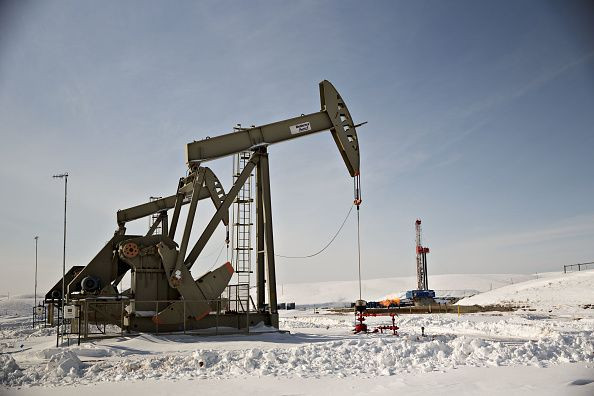OPEC Thinks The Oil Market Is Worried About The Wrong Thing

By some measures, the global oil market is the strongest it has ever been. Demand recently reached a landmark level of 100 million barrels per day (BPD). Meanwhile, producers were able to pump out enough oil to meet demand despite a range of supply issues around the globe.
This article originally appeared in the Motley Fool.
Yet there are increasing concerns about whether producers can continue pumping enough crude to meet demand, especially with output from Venezuela falling off a cliff while supplies from Iran are in decline due to U.S. sanctions. Those factors lead some market watchers to believe that a supply crunch could occur in the coming years, which would push crude prices even higher. That's why President Trump and the head of the International Energy Agency (IEA) have called on OPEC to increase its supplies to keep a lid on prices, which are starting to grow out of hand.
OPEC, however, has resisted those calls because it sees a much different oil market up ahead, which was clear by the organization's most recent monthly report.
What OPEC sees in the oil market
OPEC predicts a few worrisome trends. First off, it anticipates slower demand growth up ahead. While it believes that oil demand will rise by about 1.54 million BPD this year, that's 80,000 BPD less than last month's estimate. Meanwhile, it sees demand increasing another 1.36 million BPD in 2019, though that's 50,000 BPD less than its prior forecast. Those numbers aren't all that different from the IEA's projections in its latest monthly oil market report. The agency projects demand growth of 1.3 million BPD in 2018 and 1.4 million in 2019, and these estimates are 110,000 BPD lower than its previous view for those years. Both organizations toned down their demand growth expectations due to the impact that higher oil prices and trade war concerns are having on global economic growth.
However, what has OPEC most worried is supplies, though its concerns differ from those of other oil market watchers. The IEA is among a growing number of forecasters that's increasingly worried that there won't be enough oil to meet demand in the next year. "The market has been reacting to perceptions of a possible supply shortage," says OPEC Secretary-General Mohammad Barkindo. OPEC, on the other hand, sees things differently, and according to Barkindo, "The market remains well supplied." Furthermore, the organization's internal projections for 2019 "clearly show a possible rebuild of stocks [oil storage level]." That's why OPEC doesn't see the need to boost its output right now.
OPEC leaders aren't the only ones not worried about whether there will be enough oil supplies. The CEO of French oil giant Total (NYSE:TOT), Patrick Pouyanne, also believes "the market is well supplied." Total's CEO also noted that "inventories [storage level] are continuing to grow" and that "prices are high not because of demand but because of political issues."
How to invest amid the oil market's current uncertainty
If the IEA is right, then oil prices could continue surging over the next few months, potentially topping $100 a barrel if supply issues develop. That could cause the global economy to slow, which would hurt demand in the long run. On the other hand, if OPEC's view is correct, oil prices could cool off because there would be too much crude on the market once again. Those differing views could make the oil market a challenging one for investors in the next year.
However, many oil companies set their operations up to prosper in these very conditions. Take U.S. oil giant ConocoPhillips (NYSE:COP), which restructured its business so that it can thrive as long as oil is above $50 a barrel. At that price point, ConocoPhillips can generate enough cash to pay its dividend and invest in the new wells necessary to grow its production at a 5% compound annual growth rate (CAGR) through 2020, which would boost its cash flow at a 10% CAGR. Meanwhile, with oil well above that level, the company is producing a gusher of cash flow, which it's using to buy back its stock. ConocoPhillips has authorized a $15 billion repurchase program, which could retire as much as 20% of its outstanding shares in the next few years.
Occidental Petroleum (NYSE:OXY) is another oil company set to thrive at lower oil prices. The company recently completed its low oil price break-even plan, which will allow it to pay its high-yielding dividend, as well as maintain its current production rate, on the cash flows it can produce on $40 oil. Meanwhile, with crude above that level, Occidental Petroleum has the funds to grow production and buy back stock: It plans to repurchase as much as $2 billion in stock over the next year and a half.
Built for whatever the market throws their way
Two of the most-watched oil market reports offer very different views of what to expect in the coming months. So oil prices could be entering a very volatile period. While those ebbs and flows will likely take oil stocks on a wild ride, top-tier producers like ConocoPhillips and Occidental Petroleum should thrive no matter what happens in the coming year.
Matthew DiLallo owns shares of ConocoPhillips. The Motley Fool has no position in any of the stocks mentioned. The Motley Fool has a disclosure policy.





















